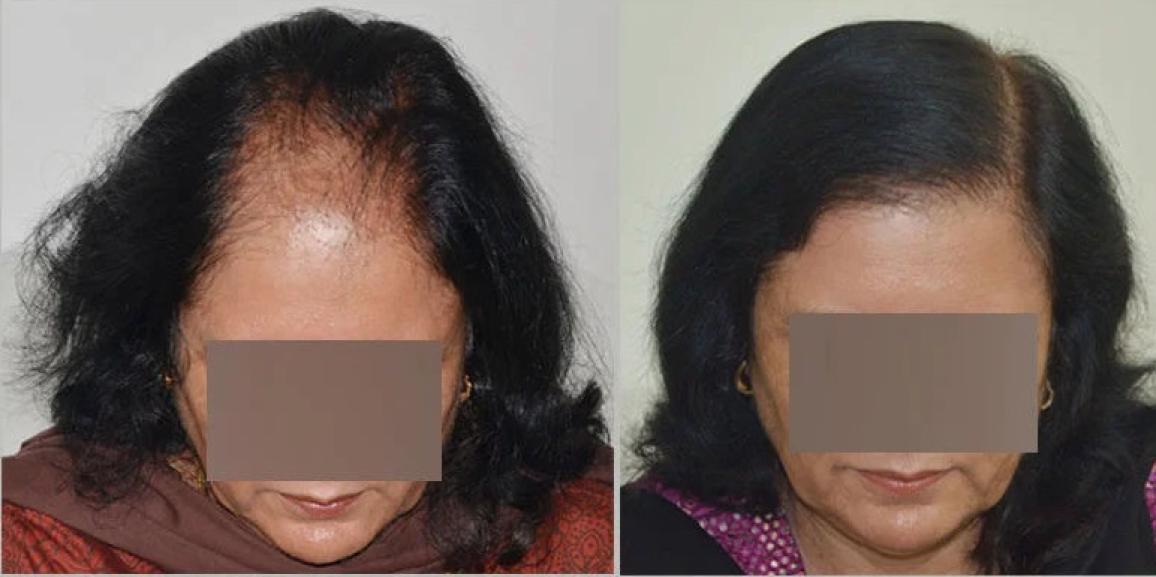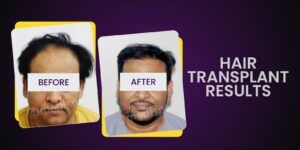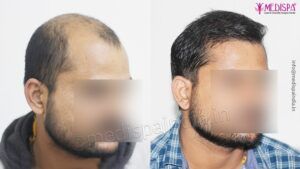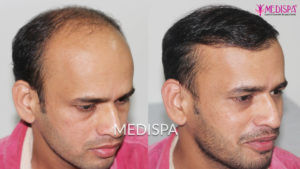
The Medispa hair transplant clinics are industry leaders in providing top-notch hair restoration while upholding worldwide standards. Because of our facilities and extensive infrastructure, we are a leading hair transplant centre in the field. Dr. Suneet Soni excels at performing hair transplants for women at reasonable prices.
Dr. Suneet Soni should be your first stop if you’re looking for the best hair transplant surgeon in India.
Beauty and appearance are the elements that are inextricably linked to a woman’s existence. Every woman aspires to have a healthy scalp and thick, luscious hair, but not all are fortunate enough to have such a blessing. Some of them experience mental turmoil, hair loss, and agony from turning bald.
Female hair loss typically follows a different pattern from male hair loss since women typically do not go bald and instead experience hair thinning, which widens the partition. Although it is typical for women to experience hair loss, very few of them choose to undergo hair transplant surgeries because very few women experience baldness.
Hair transplant in females
A hair transplant is a process in which hair grafts are removed from a safe donor location and then moved to the recipient’s bald area. The success of hair transplant treatments depends on their accuracy and high degree of sensitivity.
Male and female hair transplant are different from one another, but the fundamental techniques are the same. The following is an explanation of the hair transplant techniques:
- FUT (Follicular Unit Transplantation, also known as the strip procedure): With this technique, a strip-like piece of tissue is harvested from the donor location and then further divided into individual hair grafts. The desired bald spot is subsequently treated with a transplant of these individual follicular units. To guarantee that hair grafts survive as long as possible and provide as much coverage as possible, each of these steps is carried out at high loop magnification.
- FUE (Follicular unit extraction): In this treatment, tiny surgical punch-like tools are used to remove individual follicular units, which are then transplanted at the recipient location. This procedure, which involves extracting hair transplants from the scalp while assuming their position inside the skin, should be carried out extremely precisely under high loop magnification.
Females prefer no-shave hair transplants, which adds a little complexity to the process. Micro slits are made at the recipient site to transplant the hair follicles when you need to avoid shaving. Because the existing hairs are vulnerable to harm, the hair follicles are transplanted while taking care of them. As a result, females pay more for hair transplants than do men.
Is hair transplant procedure painful?
The majority of women are hesitant to choose hair transplant operations because they anticipate pain. The hair transplant operation is now 100% painless, so there is no need to worry. At both the donor and the recipient sites, local anaesthesia is given before the procedure, which makes it absolutely painless.
A unique mixture of many anaesthetic agents, created by Dr. Suneet Soni, needs to be provided just once before to the treatment and does not require additional injections. The maximum time for the largest hair transplant session is 12 hours, during which the effects of local anaesthesia last.
Hair transplant outcomes
The finest hair loss remedy to date is the hair transplant since it provides results that are permanent and natural-looking. After a hair transplant, the results might be seen in a few months to a year. You will lose all of the freshly implanted hairs within a few weeks, but this is completely natural and a necessary component of hair growth. You may notice your scalp starting to grow hair after three months. You may notice growing hairs after the hair transplant operation has been done for six months. Within a year, the recipient site’s full hair growth can be seen.
Given that hair transplant surgery has a success record of up to 99%, thousands of women choose to undergo the treatment. The most important prerequisites for successful outcomes are selecting a qualified hair transplant surgeon and adhering to precise aftercare instructions.
To ensure the longest possible life of the hair grafts, the surgeon’s recommendations for hair transplantation should be meticulously adhered to.
In comparison to men, women pay more for hair transplants because the process is more technique-dependent and necessitates more hair grafts.






